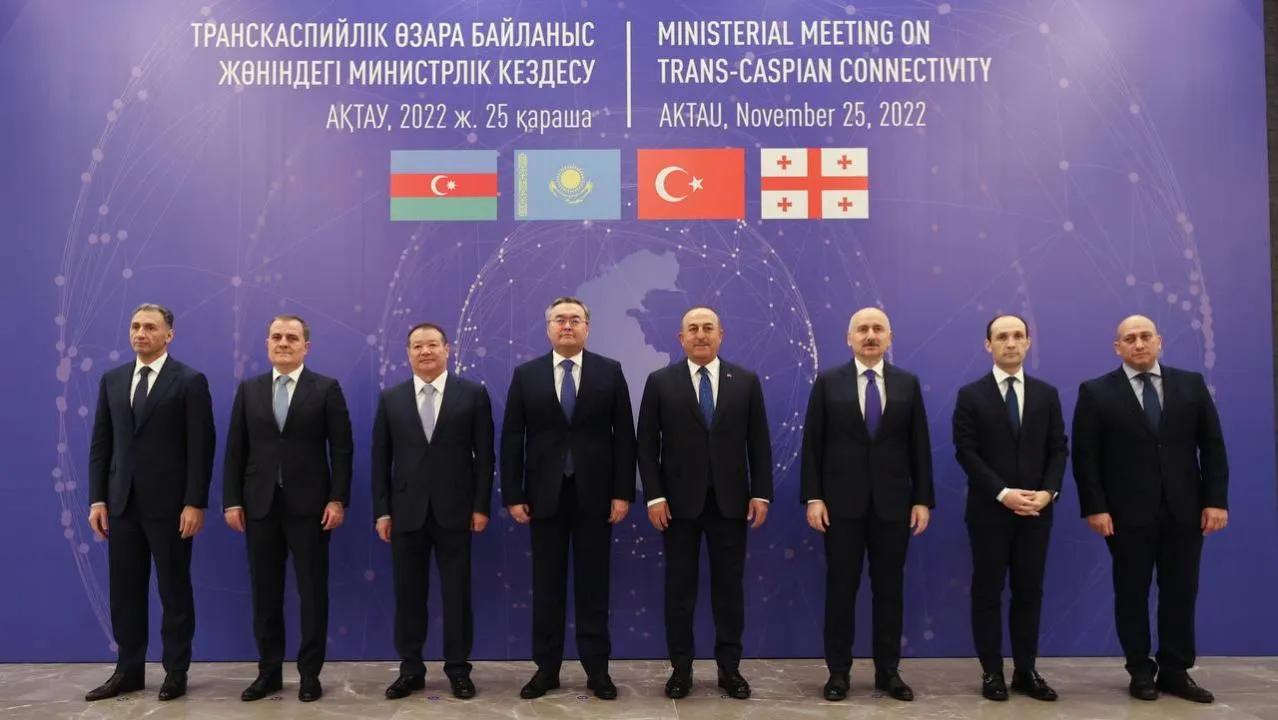Creating a Competitive and Viable Trade Route: Unlocking the Middle Corridors Potential Through Infrastructure, Trade, and Regional Integration




The Middle Corridor, officially known as the Trans-Caspian International Transport Route, has emerged as a critical alternative trade pathway connecting China to Europe. This multimodal transport network has gained unprecedented attention following disruptions along the traditional Northern Corridor due to geopolitical tensions and international sanctions. The route strategically traverses Kazakhstan, crosses the Caspian Sea, continues through Azerbaijan and Georgia, and reaches Europe via the Black Sea or Turkey, creating a comprehensive land-sea transportation network that serves as a vital economic lifeline for participating nations.
Historically, the Northern Corridor served as the primary overland freight route from China to Europe, benefiting from established infrastructure like the Trans-Siberian Railway. However, since Russia's full-scale invasion of Ukraine in February 2022, this traditional pathway has become increasingly unreliable due to international sanctions and resulting logistical disruptions. The Middle Corridor now represents not merely an alternative route but a strategic reorientation of global trade flows, offering potentially the shortest route for many European destinations and providing direct access to North African markets through Black Sea-Mediterranean connections.
The Middle Corridor presents substantial opportunities for economic development across Central Asia and the South Caucasus, regions historically characterized by limited trade integration and minimal participation in global value chains. Countries along the corridor, including Azerbaijan, Georgia, Kazakhstan, and Turkey, have recognized the transformative potential of this trade route and have begun positioning themselves as central players in revitalizing east-west trade relations. The corridor's development promises to stimulate regional economies through increased freight traffic, infrastructure investment, and enhanced international cooperation.
Azerbaijan's economy, heavily dependent on oil exports, has initiated diversification efforts alongside infrastructure improvements, particularly in port development at Baku and the newer Alat facility. These investments exemplify the broader effort to enhance sea transport capacity on the Caspian Sea. Georgia's strategic location and infrastructure enhancement initiatives position it as a vital link within the corridor, with its Black Sea ports at Poti playing crucial roles in connecting the route across the Mediterranean via maritime pathways.
Kazakhstan, leveraging its rich natural resources and vital geographic position, has expanded port infrastructure in Aktau and Kuryk to manage increased freight demand. The country's recent economic strategies emphasize diversification and improved connectivity, though harmonizing these efforts regionally remains challenging. Turkey's investments in rail network enhancements and its pivotal position as a gateway to Europe make it an indispensable component of the corridor's success.
Despite significant government investments in transport infrastructure, the Middle Corridor faces persistent bottlenecks that limit its full potential. The route's multimodal nature, combining road, containerized rail freight, and ferry services, adds layers of complexity compared to single-mode transportation systems. Each mode-switch necessitates different standards and requirements, contributing to unpredictable transit times and increased costs that diminish the corridor's competitiveness against other global trade routes.
Critical infrastructure gaps persist, particularly at border crossings and ports where congestion has intensified since 2022. The Caspian Sea crossing presents particular challenges, with inconsistent ferry services, limited container and rail availability, and inadequate port facilities hindering seamless goods movement. The existing infrastructure requires substantial capacity increases, including expanding ship fleets and enhancing rail networks to meet growing demand.
Key infrastructure projects have demonstrated progress, including the Baku-Tbilisi-Kars Railway, which provides direct rail connectivity between Asia and Europe. However, developing intermodal facilities and improving rail-road and rail-port interfaces remain crucial steps to alleviate operational pressures. The corridor's geographic challenges, combined with complex regulatory frameworks across different countries, compound operational inefficiencies that must be addressed through coordinated international efforts.
Surveyed private sectors consistently express the need for enhanced regulatory harmonization and improved trade facilitation measures throughout the corridor. Current challenges include divergent legal frameworks, cumbersome border procedures, and lack of standardized documentation processes. Electronic data exchanges, streamlined documentation, and standardized border procedures are essential for improving trade efficiency along the route.
Interoperability of transport vehicles and equipment, particularly regarding rail gauges and transport permits, remains critical for boosting operational efficiency. The complex regulatory environments across multiple countries create significant barriers to seamless transit, emphasizing the need for comprehensive reforms. Initiatives such as unified consignment notes for international rail transport provide examples of successful coordination, but broader adoption and implementation are essential for meaningful progress.
Harmonizing customs procedures and digitalizing trade documents across corridor countries represents an imperative for future development. Stakeholders emphasize the necessity for electronic data interchange, automated processing systems, and standardization of regulations to expedite border operations. Progress in creating a regional legal framework for seamless transit documentation and permits is equally vital to streamline complexities faced at various border points.
Realizing the Middle Corridor's full potential requires sustained political commitment, stakeholder collaboration, and strategic planning to integrate regional markets across Central Asia, the South Caucasus, and beyond into Europe and Asia. Additional investments are needed to address infrastructure and capacity gaps effectively, with priorities including enhancing multimodal capacities at sea ports and border crossings while increasing fleet capacities, particularly in the Caspian Sea.
High-level political discussions have focused on increasing infrastructure investment, improving trade facilitation measures, and creating more cohesive intergovernmental dialogue to bolster the corridor's operational capacity. Such efforts are fundamental in transforming this corridor from a transit alternative into a thriving trade route that stimulates regional economies and promotes sustainable development.
For the Middle Corridor to emerge as a truly competitive and sustainable trade link, prioritized investments in infrastructure, enhanced trade facilitation measures through digitalization, and unified regulatory practices are essential. Stakeholders underscore the importance of harmonizing transit regulations, optimizing multimodal connections at critical junctions, and improving the regional investment climate to attract increased private-sector involvement.
The Middle Corridor's significance extends beyond serving as an alternative to disrupted northern routes. It represents a strategic opportunity for comprehensive regional integration and economic transformation across participating nations. The corridor's successful development hinges upon strategic international collaboration, overcoming logistical hurdles, and creating robust frameworks that establish cornerstones for future regional economic integration and growth across Eurasia.
https://www.oecd.org/en/publications/realising-the-potential-of-the-middle-corridor_635ad854-en.html
Comments